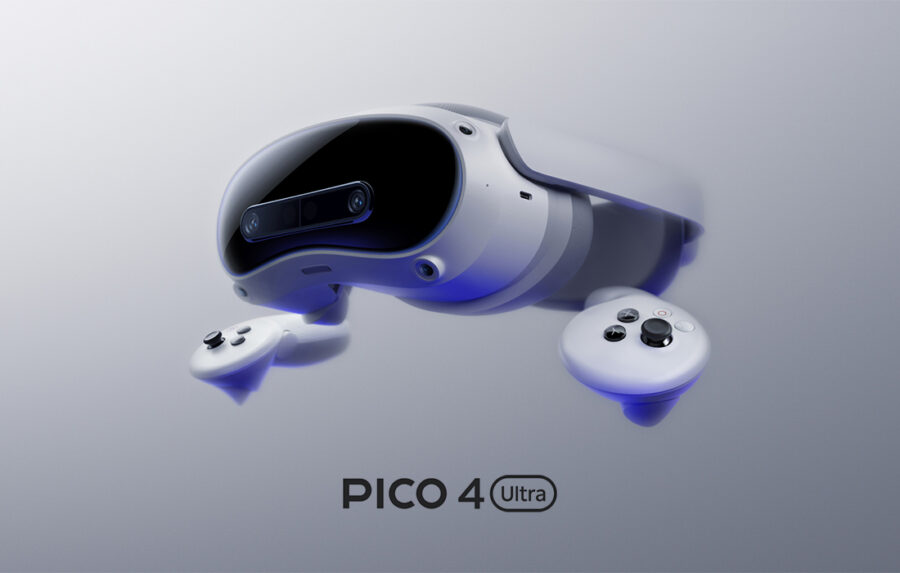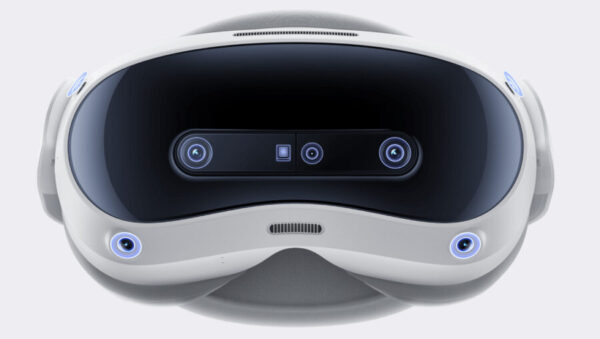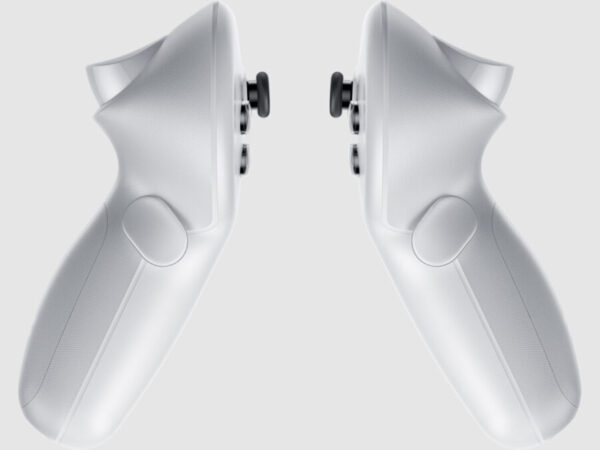
In Virtual Reality News
August 21, 2024 – Pico Interactive, a manufacturer of enterprise and consumer virtual reality (VR) solutions and a subsidiary of ByteDance, has this week unveiled its latest standalone VR headset with the launch of the ‘Pico 4 Ultra.’
The Pico 4 Ultra builds upon the foundation of its predecessor, the Pico 4, with significant hardware upgrades aimed at delivering an enhanced mixed reality (MR) experience for users, and which also position the headset as a solid competitor to Meta’s Quest 3 device.
Pico 4 Ultra Specifications and Features
The Pico 4 Ultra is powered by Qualcomm’s Snapdragon XR2 Gen 2 chipset, which offers a 20% improvement in CPU performance compared to the previous generation, according to Pico. The device also comes with 12 GB of RAM and 256 GB of storage.
For visual clarity, the Pico 4 Ultra features dual 2.56-inch displays with a resolution of 2,160 × 2,160 pixels per eye and a refresh rate of up to 90 Hz. The headset also boasts a 105° field of view (FoV). Compared to the device’s predecessor, the Pico 4 Ultra provides an increase in screen brightness by 25% and an increase in resolution rendering by 62%, according to Pico.

Mixed Reality Passthrough on Pico 4 Ultra
When it comes to passthrough functionality the Pico 4 Ultra includes two 32 megapixel (MP) color passthrough cameras and an iToF depth-sensing camera, enabling high-quality MR experiences with full-color passthrough and 3D environment meshing. However, when viewing in passthrough mode, the headset takes the 32MP camera output down to an 8MP effective resolution for the passthrough view, but Pico stated that this is more than enough for offering a high-quality color passthrough experience with low distortion and a refresh rate up to 72 Hz.
The headset’s battery, located in the rear padding for balanced weight distribution, has a capacity of 5,700 mAh and supports 45W fast charging. This could potentially allow the device to charge from 0% to 100% in under an hour, a significant improvement over previous models.
The Pico 4 Ultra’s controllers have also been redesigned, featuring a ringless design that is 50% shorter in height compared to the previous generation, making the controllers both lighter and more comfortable to hold, according to Pico.

PanoScreen Workspace and PC/Mobile Content Mirroring
Another useful feature of the Pico 4 Ultra is the introduction of Pico’s ‘PanoScreen’ workspace, allowing users to open and manage multiple expandable windows within a 360° virtual environment.
The all-new PICO OS workspace feature supports flexible window resizing (up to 280 inches), enabling users to create a customized virtual desktop that can accommodate up to three different screens simultaneously. With the PICO Connect app, users can mirror content from their Mac, Windows PC, and iOS or Android mobile devices directly to the headset.
Additionally, the PanoScreen workspace feature supports interactions using external keyboards and mice, controllers or hands, enabling users to easily switch between different interaction methods to suit various scenarios.

Pico Motion Trackers
Alongside the headset, Pico has also introduced new Motion Trackers designed to enhance the VR experience by offering full-body tracking. Weighing just 27 grams, these lightweight trackers can be easily paired with the headset, allowing users to interact with VR environments using their entire body.
The trackers are equipped with 12 infrared sensors and an IMU sensor, providing 6DoF tracking with a latency of just 20 milliseconds and allowing for accurate and responsive movement tracking across 24 different skeleton points, according to Pico.
![]()
Pico 4 Ultra vs Meta Quest 3
When compared to Meta’s Quest 3, the Pico 4 Ultra offers some notable advantages, including a higher RAM capacity (12 GB vs. 8 GB) and the inclusion of Wi-Fi 7 support, which could provide more stable and lower-latency wireless streaming for PC VR gaming. However, the Quest 3 offers a higher maximum refresh rate of 120 Hz. When it comes to pricing (more on that below), the Quest 3, which retails for USD $499.99, is around USD $100 cheaper than the Pico 4 Ultra.
When is the Pico 4 Ultra Available?
As of now, the Pico 4 Ultra is exclusively available in China, where it retails for CNY 4,299 (approximately USD $600). Pre-orders have begun, with shipping expected to start on September 2, 2024. As for international availability, Pico has yet to confirm any additional details.
For more information on Pico and its newest Pico 4 Ultra VR headset, please visit the company’s website.
Image credit: Pico
About the author
Sam is the Founder and Managing Editor of Auganix, where he has spent years immersed in the XR ecosystem, tracking its evolution from early prototypes to the technologies shaping the future of human experience. While primarily covering the latest AR and VR news, his interests extend to the wider world of human augmentation, from AI and robotics to haptics, wearables, and brain–computer interfaces.
